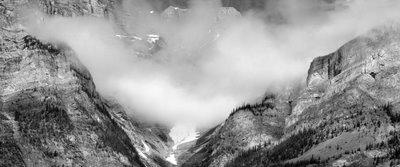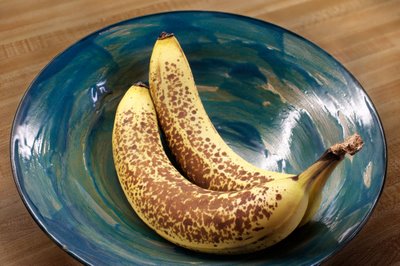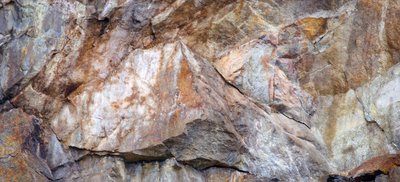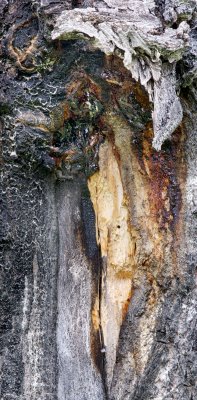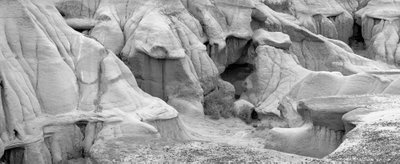I have struggled for a long time to understand colour management and having finally understood all the more important pieces (and having had difficulty getting said information from any one site, here's my explanation of colour management.
In days of yore, to get really good colour you needed dedicated equipment, all calibrated against each other, unique and totally inflexible about making changes - no change in paper, printer, scanner, monitor, etc. Then there was light. Apple computer came up with Colorsync and we now have a definition of colours that can be shared, measured, adjusted to and from, and generally worked with to make colour management with personal computer realistic. It was this that gave Apple the huge lead in the graphics and photography industries.
Eventually colorsync was adopted by the rest of the world - people like Adobe and other major players and eventually even by Microsoft and Windows. Photoshop became colour savy.
You often see colourspaces as brightly coloured blobs representing in two dimensions the three primary colour world of shades and tints and saturation and brightness of colour. The bigger the blob, the more intense the colours are that can be described by this colour space. If it happens to be the colour space of a monitor, it's the colours you can see on your screen, if it is the colour space of a particular printer/paper combination, it lets you know what colours can be recorded by that printer and paper.
Once you have a defined colour space, you can translate from one colour space to another. That process is called a profile. For example. Lets say that your computer screen when asked to display red, actually displays a rather purplish red (magenta) instead. You need to know what signal to send the monitor so it will show a true red. The translation of the original red to what the printer needs to see to actually print red is controlled by the profile. It might tell you something like to get a real red on this particular monitor, send 95% red and just a bit of yellow on the side and voila - no more puple - just a nice bright red.
Of course I'm simplifying, but basically that's what it does.
There are lots of colour spaces and some of them are fairly standard, but the beauty is no matter which one you use, there are ways to translate to and from it any any other standard colour space.
For example, my previous blob article on adjusting colour space for the net told how to go from an image that looked good in Photoshop to one that looked good on the net. This involved converting the profile of the image from whatever Photoshop used to what the net uses (which is sRGB). The image doesn't change on screen but the tagged colour profile for the image does and when the image is put on the internet, the colours come out right (because the conversion undid the distortion built into the internet's own colourspace. Were you not to bother converting profiles, there would be a one way adjustment of the colours into the internet and there would be radical changes in colour.
You can have colour spaces that define cameras, scanners, monitors, printers and any other device. You have colour spaces that define what colours Photoshop is working with. sRGB is one of the more restrictive colour spaces - ie. it can't describe any of the more saturated colours. Adobe 1998 has been the standard computer colour space for several years (say from 1998 by coincidence...) though recently an even larger colour space has become fairly common, called Prophoto Colourspace.
When shooting digitally, images are converted in colourspace into what Photoshop is using (assigned in 'Colour Settings' in the edit menu of Photoshop. Photoshop can be told what profile you are using for your monitor (so colours are translated so the show true on screen). In printing, another profile is used for a particular printer/paper combination to convert the colours so they show up most accurately on paper.
Soft proofing is a way to simulate what the final print will look like, but on screen. This is done also through the printer profile (as well as the monitor profile). Printing profiles actually consist of two tables. The first describes the adjustments to the colour sent to the printer so that you end up with the colour you wanted (or started with), while the second table describes the limitations of the printing process - ie. just how bright and saturated colours can the printer, ink, and paper combination make?
So, that's the theory, here's what you actually do:
1) profile your monitor - this means buying a spectrophotometer that can read the colours and brightness on screen and create a profile to adjust that colour so it matches the image file. I use a Spyder.
2) set up your printer/paper profile. If you are using your printer manufacturers papers, you may already have the profile installed, but keep in mind the possibilty that there are better profiles out there or even an update of the manufacturer profile. Some manufacturer profiles are better than others - I have been disappointed with Epsons and there's quite a bit of work on the net by concerned and qualified people producing better profiles - for example Bill Atkinson of Macintosh and Hypercard fame (his are free for the taking). Paper manufacturers produce profiles for their papers in commonly used printers - I use Moab Entrada paper and have been delighted with it's profile for the Epson 4000. You can purchase profiles - either premade (can't really see the point unless not available any other way) or made to measure. In the latter case you download an image file and print it using exactly the settings they recommend, you return the print which they then scan with the spectrophotometer and produce a custom profile for your printer, your paper. These can cost $25 - $100 but you may well make that back in not wasting paper in a relatively short period.
On my Mac I simply download the profile then open colorsync and load the profile into it and the NEXT time I open Photoshop the profile is available for use. Usually they come with pretty clear instructions on where to put the profile if you are using Windows.
2) set the colour preferences in Photoshop by going under the Edit menu to Colour Settings. If you are doing colour the only important setting here is the first one - what colour space are you going to use. Adobe 1998 is what I use though prophoto is another possibility. All the other settings in this window are less important. Grey dot gain I set at 20% mostly because it doesn 't seem to matter what I set it at, black and white prints don't match the monitor without some major adustments on my part - someday I will invest in full profiling equipment that can do a printer profile for black and white, but until then...
3) You might want to go to proof setup under the View menu to select the printer profile with which you do your proofing. I'm note yet convinced that proofing is all that valuable but confess I'm new to it and will experiment further. It might in the end save some iterations of paper use.
OK, you have an image, you bring it into your raw processor (hell, if you are using jpegs, might as well not bother reading any of this, you are so handicapped already that this is way beyond you - the only possible exception would be when shooting action but you still need that football jersey the right colour.
You can specify the colour space in your raw processor but it will get converted to the colourspace you set in Photoshop once you bring it into Photoshop, no matter what. Of course you want to maintain 16 bit as long as possible.
You edit the colour image as desired until you have the perfect image on screen. You can then either print the image and compare, or you can soft proof by hitting command Y (or control Y on Windows), and you will see the image as the printer will make it (more or less). Keep hitting Command-Y and you will toggle back and forth.
To print an image, hit command-option P to bring up the print dialog box. You select the printer, then the paper size and orientation, then the magnification of the image (so it all shows up on the paper with an appropriate size white border. Then you go down to the area which is labeled 'colour management'.
You set the options to 'let Photoshop determine colours' and printer profile to your chosen printer paper profile you loaded earlier. Set rendering intent to perceptual, black point compensation on. Select print to bring up the second dialog box which then again selects the printer and the presets. The latter lets you choose the amount of ink to be applied to the paper. Plain paper can't hold much ink without turning to mush, good art papers can soak up a lot of ink and in fact without a lot of ink will look too pale. The settings basically should match your profile. In the case of papers by the printer manufacturer, there is no problem, just match the paper, but for third party papers like I use (Moab Entrada Bright White) you need to find out what the recommended settings are, or at least play with the settings till you find the one that makes the prints that most closely match what you see on your profiled monitor. Again you hit print, and this is it, you are on the way to making your first profiled print.
OK, now you know how to do it, but a few explanations will explain why you were choosing the various settings.
Rendering intent refers to the rules by which you deal with colours which exist in the original file but which cannot be reproduced by the output device, in our case, the printer.
You can choose:
Saturation - suitable for the graphics industry - so forget it
Perceptual - the normal and usual choice. In this case all colours are scaled down by a percentage based on the highest saturation in the image as compared to the highest the printer can produce with a given ink and paper. You will lose intensity of colour but everything will be in it's same relative position to the other degrees of saturation.
Colorometric (relative and absolute) leave colours alone if they are in gamut (ie. they can be reproduced by your printer), but compresses all the out of gamut colours till they are within the colourspace of the printer. This normally produces an artificial look but occasionally can actually help an image. Watch though for banding (sudden transitions from one saturation or brightness to another). I never use it - preferring to use Photoshops normal controls to work on an image rather than hoping this will rescue it.
You might wonder why you have to tell the computer twice which printer you are using - arguably you are telling it for different reasons, though there's no real reason why Photoshop couldn't have done it more intuitively. The first time you are telling the computer which printer because it affects the maximum paper sizes, the minimum border width, and even the maximum length of roll paper. My Epson 4000 on my Mac can only print 44 inches - try anything larger (and it lets you) and you get a tiny image on large expensive paper. With my 7600 it will print 96 inches long (and I have one image I print 17X60 inches centred on 72 inches of paper.
The second time you specify the printer, you are telling the computer which actual printer to use. A 'feature' of the Mac is that every time you change printers, you have to reset the presets too - even if the correct preset is now displayed. So remember, first set the printer, then the preset. If the preset is already correct, just click it and let go. Presets are printer specific and should be labeled as such as if you use a setting for the wrong printer, the settings don't take. I label my settings by the printer name - the paper type and if need be the dpi setting (dots per inch - 1440 or 2880) and possibly the ink type (eg. matte vs. glossy black). So '4000 Ent Br.Wh. 1440 man' tells me this is the 4000 printer, Entrada Bright White paper, manual feed, 1440 dpi (my usual setting).
In presets, the only parts that are of any concern are print settings and colour management. It is print settings in which you choose the paper, the dpi and the speed (high speed or not). I find that with modern printers they are so accurate that I can't see a difference between fast and slow printing. What happens in high speed is that ink is laid down as the head goes both left and right, while with high speed off, ink is only laid down as the head travels to the right, doing nothing as the printer head returns to the left edge. Of course to be able to choose these settings you click on advanced which then makes these settings selectable.
You can also set feed - roll, manual or tray feed.
Colour management is simple - it's off - you don't want your printer driver messing with all the careful work you did in Photoshop.
Of course settings for black and white printing are a whole other story and depend on whether you are using the regular printer driver or a rip. As anyone concerned about quality is using a rip and they vary, I will leave that to the appropriate instruction manuals.
Happy colour printing!





